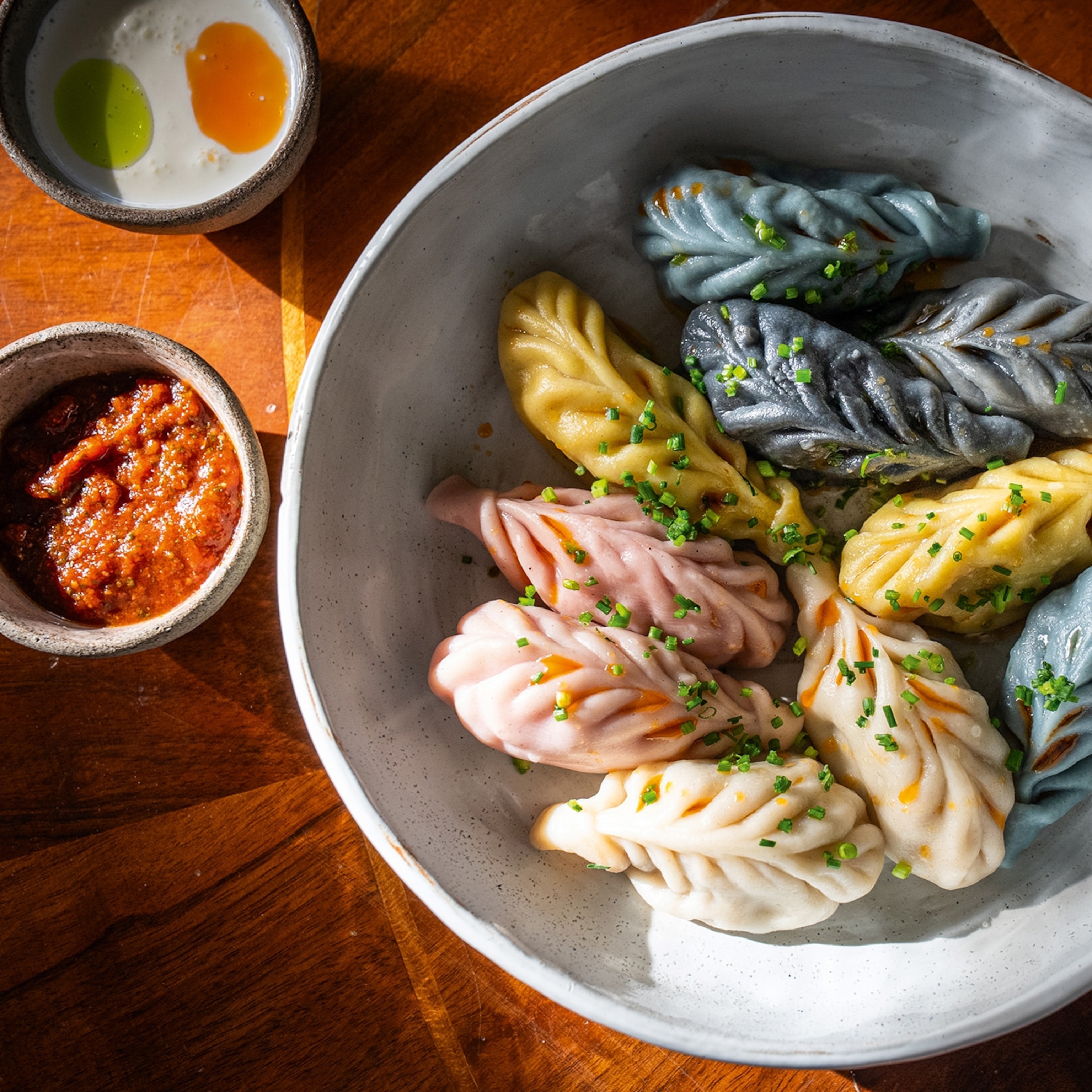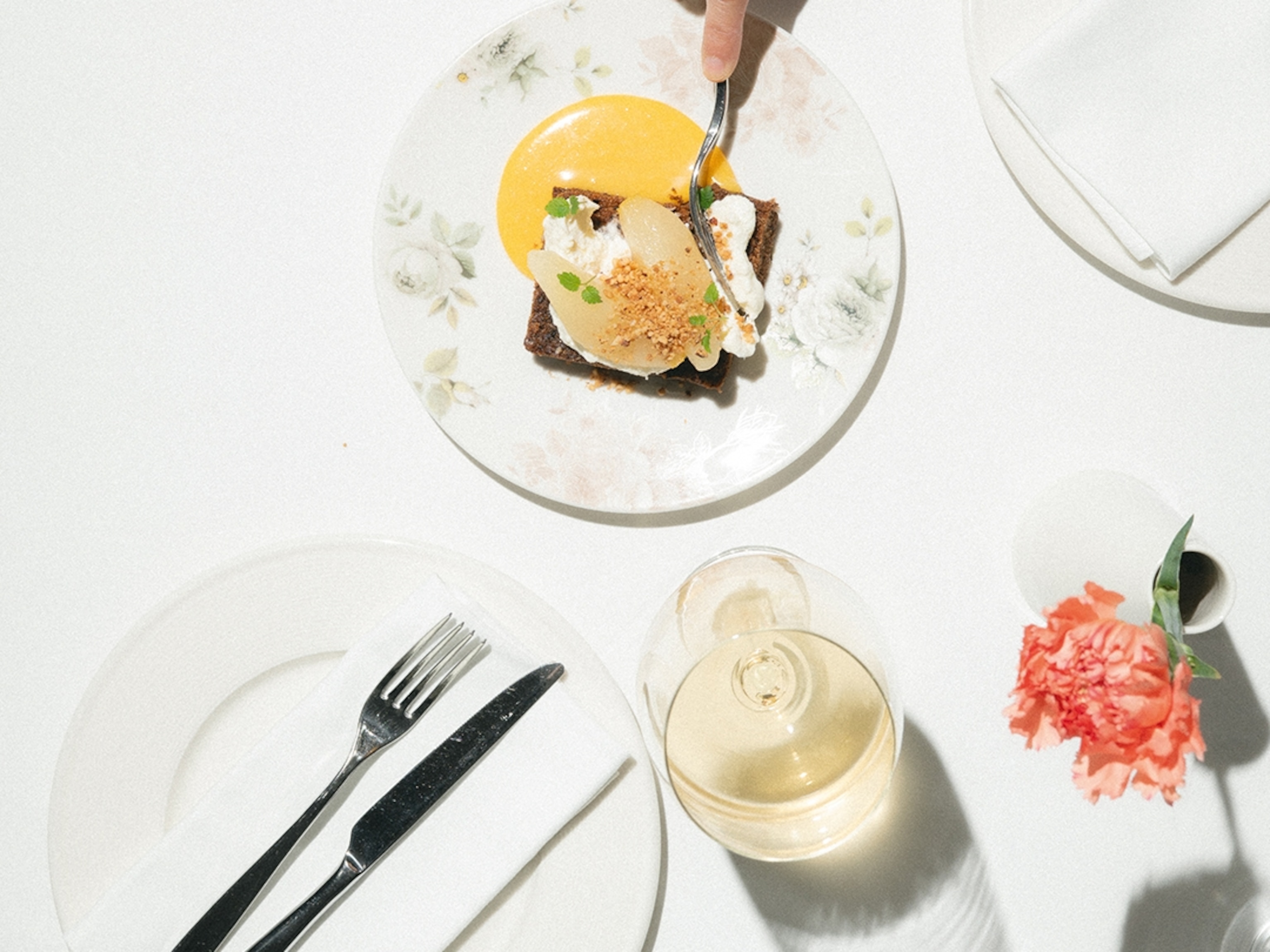
Deconstructing baklava, a Turkish classic with a noble past
This sweet, layered pastry has spread across the Middle East and beyond, with each country adding its own twist to the recipe
Nightingale’s nests, twisted turbans, lover’s lips… In the UK, we may be most familiar with baklava made in a large circular tray and cut into diamond-shaped pieces, but in Turkey this sticky, sweet pastry comes in a whole variety of forms — often with pleasingly poetic names to match.
A syrup-soaked sandwich of tissue-thin yufka pastry and ground nuts, baklava has been the ultimate Turkish festive indulgence for centuries, prepared for all manner of special occasions, from weddings to religious festivals. It’s a descendent of the börek and similarly layered, folded — often savoury — yufka pastries, which have been an essential part of Central Asian Turkic cuisine since at least the 11th century.
This culinary tradition is thought to have been combined with the Arab practice of soaking pastries and doughnuts in honey or sugar syrup, resulting in what’s now known as baklava. And, as the earliest written mention of it by name is in a 15th-century poem — unnamed, as was common at the time — by Turkish Sufi dervish Kaygusuz Abdal, we can assume it was already an established dish at this point.
By the 16th century, baklava had become a food of renown, and was eulogised by poets in lines such as this, from a verse by Nazmi of Edirne: ‘O delightful, delicate, sweet, pleasant baklava, O jewel, O sultan, of Ramazan meals.’ Around the same time, baklava makers in palaces and the homes of statesmen across the Ottoman Empire became specialist pastry chefs, comprising a class known as baklavacı.
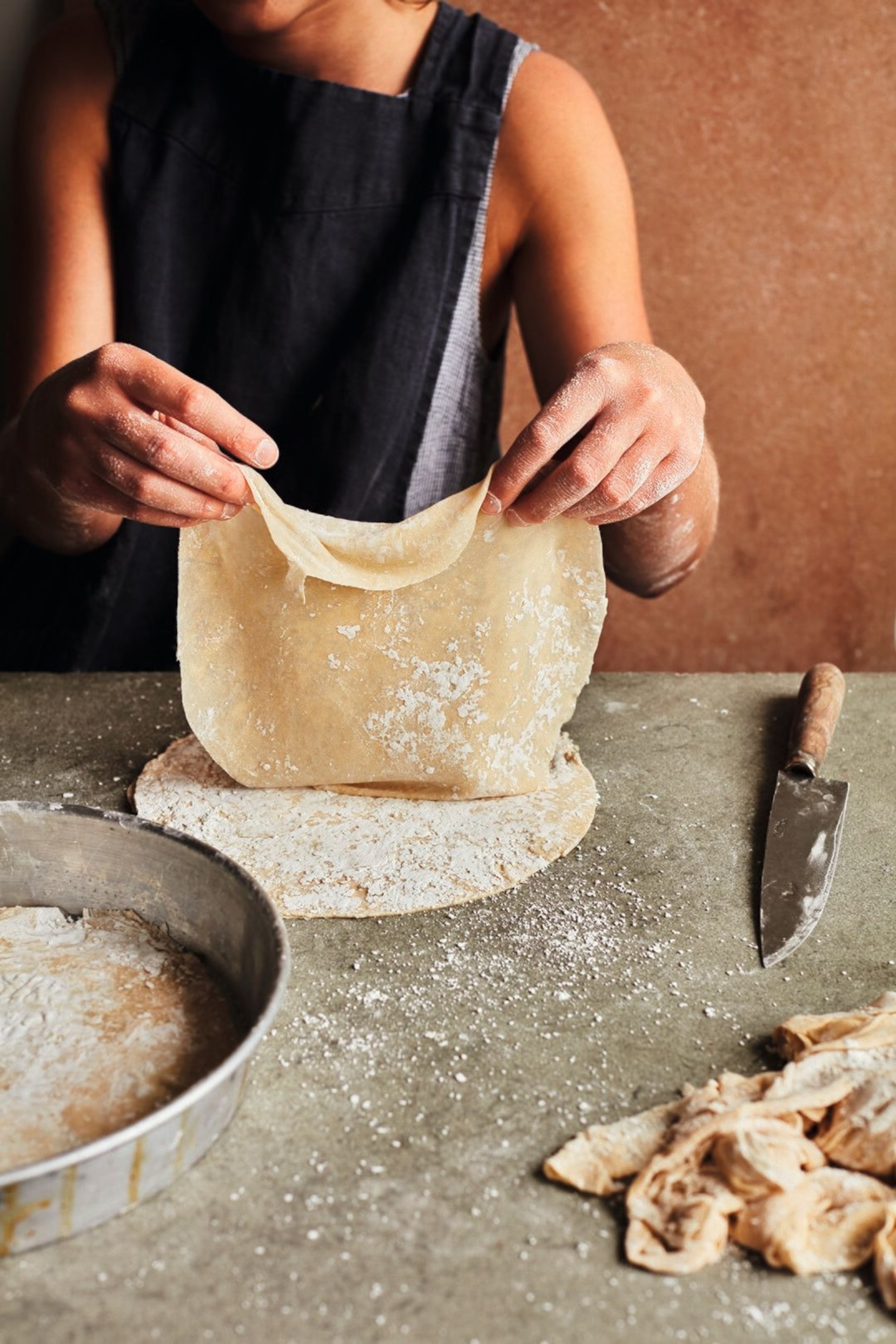
A kitchen register from Topkapı Palace in 1474 reveals that baklava with 41 layers was made daily during Ramadan (or Ramazan, as it’s known in Turkish), and demand was so high the team of baklavacı couldn’t keep up. The task of rolling out the huge numbers of required pastry sheets was therefore outsourced to women working at home.
Baklava wasn’t just a dish for Ramadan, however. It was a feature of grand dinners given by the upper classes throughout the Ottoman Empire. During these multi-course meals, sweet dishes were interspersed with savoury, and diners would eat no more than a morsel of each.
When Lady Agnes Ramsay, wife of the Scottish archaeologist Sir William Mitchell Ramsay, was invited to a dinner party in the western Turkish town of Şuhut, in the 1890s, she was unfortunately unaware of this practice. When the third course of baklava (filled with clotted cream) arrived, she assumed this marked the end of the meal and ate her fill. In fact, 20 or more courses followed, and with no appetite left she was obliged to continue eating ‘for three long, terrible hours’.
Records of baklava outside Istanbul between the 15th and 17th centuries suggest the pastry was spread partly by Ottoman bureaucrats who were posted to provincial towns and cities across the empire, as well as by merchants and other travellers, who are thought to have introduced the dish to countries further afield, from Austria to Iran.
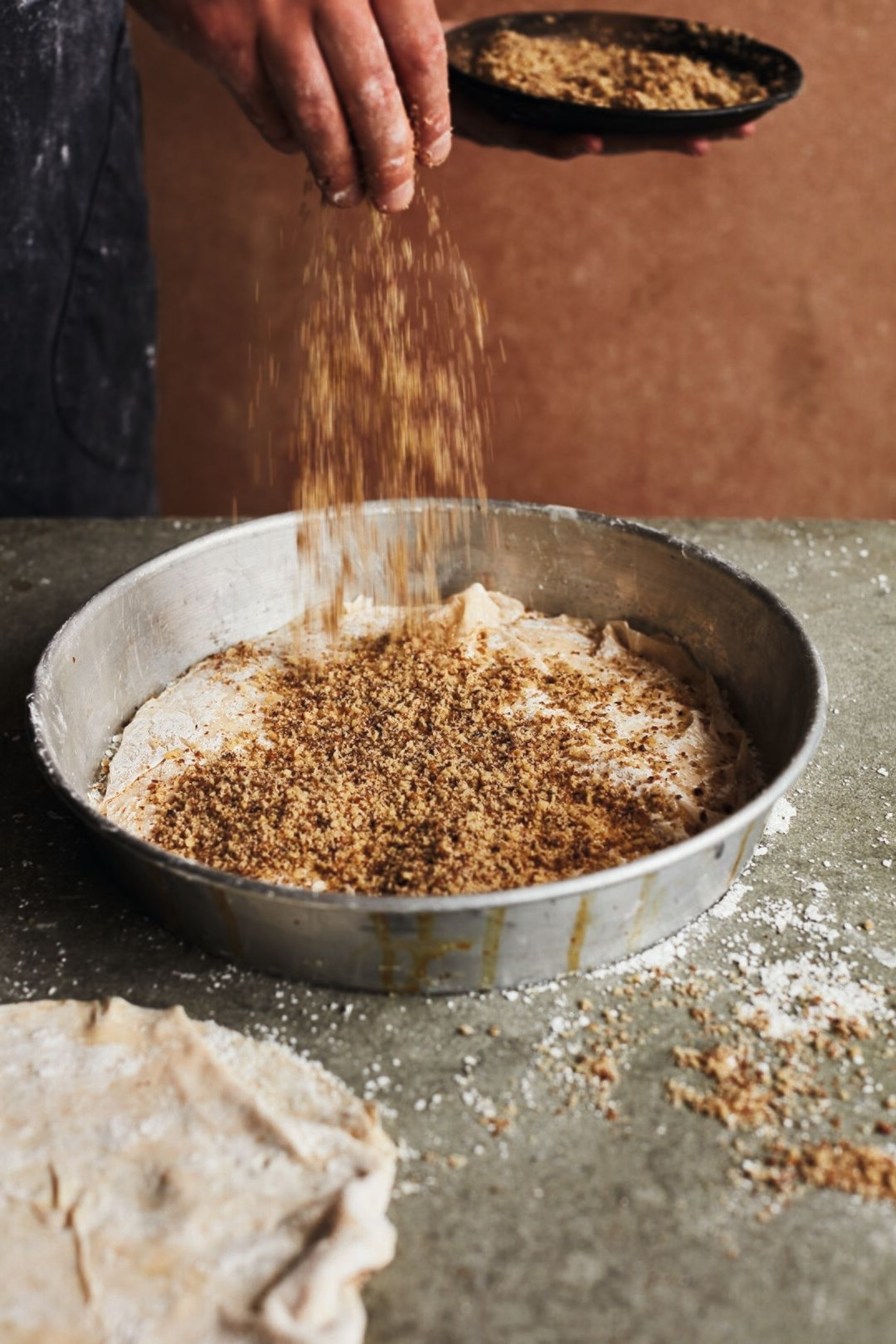
Baklava also spread via charity kitchens known as ‘imaret’, which were part of mosque complexes and served meals to staff, visitors and the poor. Copper baklava trays listed in probate registers from the late 15th century onwards reveal that by this point it was no longer a dish exclusive to the elite, but was being made by middle-class families, too.
As for how the dish is prepared, the traditional Turkish method would involve rolling out yufka (usually made simply with flour and water, although some recipes call for eggs, yoghurt or butter, too) using an oklava: a long, slender rolling pin. This technique involves rolling, flipping and rotating every sheet of pastry multiple times until you’re left with a perfect, paper-thin circle. It requires a great deal of practice and skill, not to mention patience, in order to role out the large amount of pastry that’s required. A simpler method first recorded in the early 19th century — and still widely used today — involves simultaneously rolling out a pile of 10 or more circles of dough. Each of these is dusted liberally with starch to prevent sticking, and a thick rolling pin is used, rather than the traditional oklava.
In the 17th century, the Turkish explorer and writer Evliya Çelebi claimed that baklavas made for wedding feasts in Belgrade were the size of cartwheels, with every one consisting of 1,000 layers. While there was no doubt of the poetic licence brought into play here, Ottoman recipes do specify up to 60 layers, while insisting the baklava should always remain light.
Tradition also dictates that the pastry should be so crisp that a coin dropped from a height of an arşın (an old unit of measurement equivalent to about 69cm) should be able to pierce every layer and strike the bottom of the baking tray. From the 17th to the 19th century, this test of excellence was part of guild examinations for young cooks hoping to be promoted to master chef.
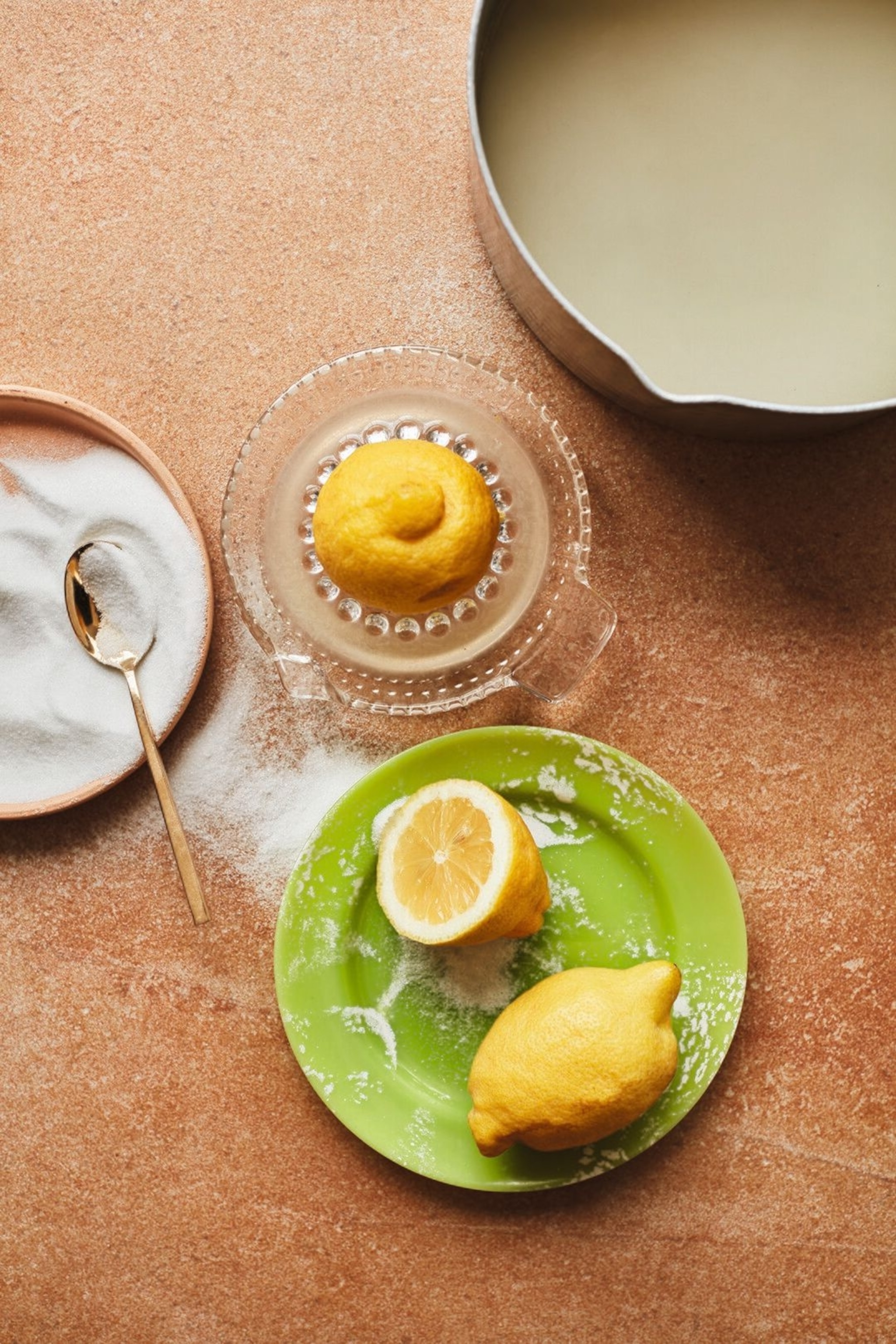
The yufka pastry is layered with a filling — usually ground nuts. While almonds or walnuts were originally the most commonly used, hazelnuts, clotted cream, egg custard, fresh cheese, melon and even pureed beans, lentils and chickpeas have also been recorded.
Today, pistachios and walnuts remain the most popular baklava fillings in Turkey, followed by semolina custard and — more rarely — unsalted fresh cheese. The latter variation, which tends to be eaten hot, as opposed to the more usual room temperature, was once common in Istanbul, but has survived only as a speciality of a few regional cuisines, notably in the city of Şanlıurfa in southeastern Turkey.
Sugar, once an expensive luxury available only to the wealthy, is now much more affordable, and as a result, Turkish baklava is almost universally made with sugar syrup — although in some parts of the country, home cooks use syrups made with honey or grape molasses. Today, the dish is generally baked in the oven, but well into the 19th century it was cooked over a gentle charcoal fire covered by a circular iron griddle, spread with hot embers — a method that’s still employed in some areas.
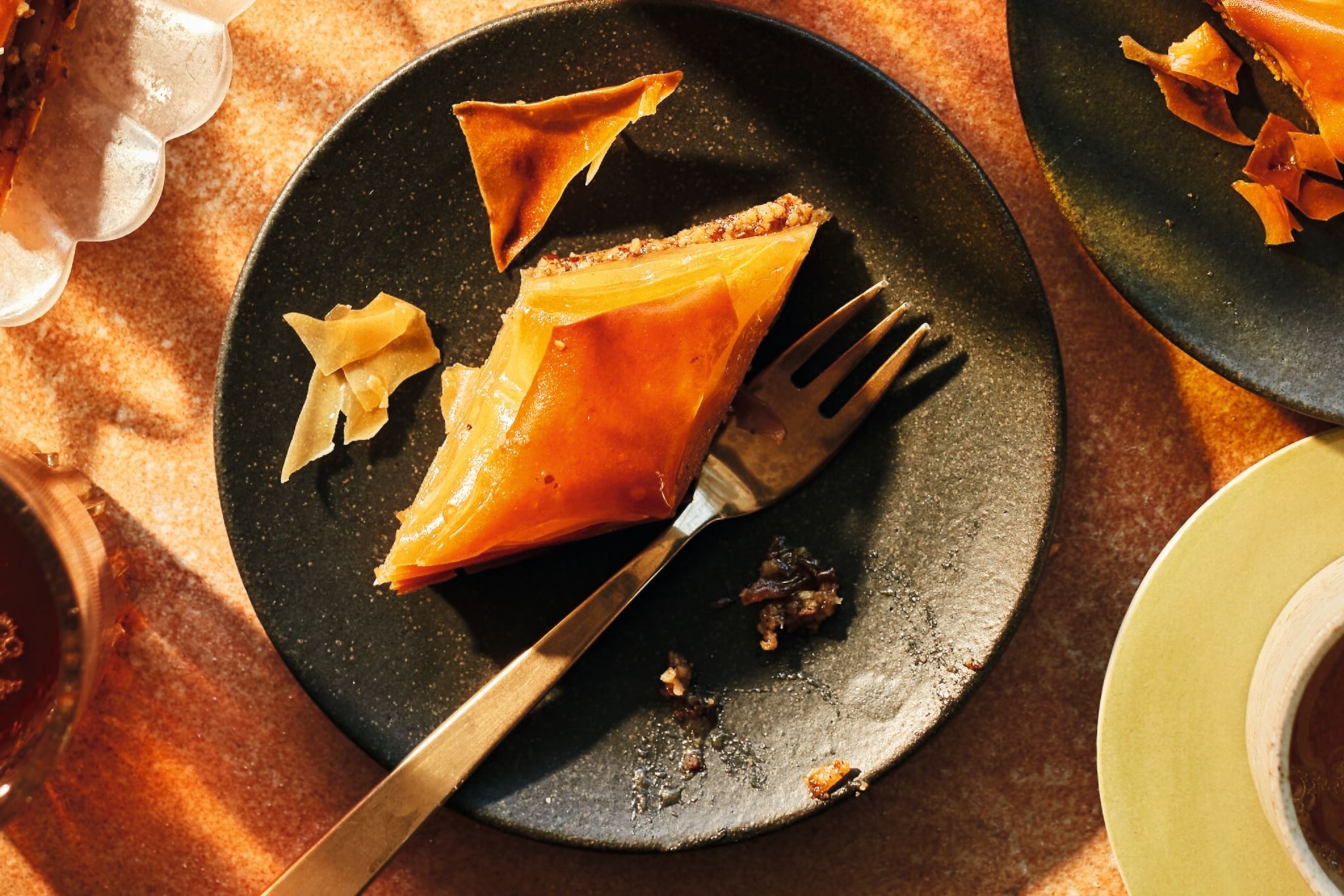
While the general concept of baklava is fairly consistent across the former Ottoman Empire and beyond, regional variations abound. In Lebanon less syrup is used, so it’s drier and crunchier. In Algeria, meanwhile, the syrup is typically flavoured with orange blossom water, while in Iran you’ll find it infused with fragrant cardamom and rose water. In Armenia, the nutty filling is spiced with cinnamon and cloves, and in Greece they also favour cinnamon, but tend to use a honey syrup rather than sugar. In Cyprus it’s common to use geranium-infused syrup, with a filling of almonds, cinnamon and rose water. And in Azerbaijan the filling is usually placed between each sheet of pastry, rather than sandwiched in the middle.
Regardless of where you are, though, baklava is no longer a rarefied indulgence. Particularly in Turkey, you’ll find innumerable shops serving this sweet treat to the masses, as well as plenty of ordinary people making their own at home — even if it’s with shop-bought pastry. It’s still the centrepiece of special occasions, but it’s a dish for every day, too — whether you prefer a twisted turban or lover’s lips.
A historic timeline of baklava
1400s
Sufi dervish Kaygusuz Abdal mentions baklava filled with almonds or lentils in a poem about banquets
1473
Sultan Mehmed II’s cooks prepare baklava daily during Ramadan
1650
The dish’s first appearance in written English. Robert Withers writes that the sultan ‘closeth up his stomach with a bocklava’
1659
Turkish traveller Evliya Çelebi hyperbolically claims cartwheel-sized baklava, with 1,000 layers, are made at wedding feasts in Belgrade
1775
Ottoman cleric Dürrizade Nurullah Mehmed Efendi publishes recipes for baklava filled with melon and clotted cream
1941
Making baklava is banned in Turkey because of the flour shortage during the Second World War, and only permitted again in 1944
2018
The world’s largest baklava, baked in a 200sq-ft tray, is made in Ankara, earning a place in Guinness World Records
Recipe: Walnut baklava
This recipe from Turkey-based master baklava chef Abdullah Yeşil features 20 layers of thin pastry for that classic crisp, flaky texture. It’s layered with the traditional walnut filling — if you can’t find ground walnuts you can buy whole ones and blitz them in a food processor for about 15 to 20 seconds.
Takes: 2 hrs plus 1 hr resting
Serves: 8
Ingredients
3 medium eggs
750g strong white flour
cornflour, for dusting
300g ground walnuts
240g ghee, melted, plus extra for greasing
For the syrup
1kg granulated white sugar
1½-2 tsp lemon juice
Method
1. Heat oven to 165C, 145C fan, gas 3. Add the eggs, 2 tsp salt and 300ml cold water to a large mixing bowl and beat well. Add the white flour and stir into the wet mixture with a wooden spoon. Bring together using your hands to form a dough.
2. Turn onto a lightly floured work surface and knead for 5 mins. Return the dough to the bowl, cover with a damp tea towel and leave in a cool place for 1 hr.
3. Sprinkle your work surface with plenty of cornflour to avoid the dough sticking. Shape the dough into a thick 40cm-long roll, then cut into 20 equal-size pieces. Take a piece and flatten it by hand, then use a rolling pin to roll into a 20cm circle about 1mm thick, turning the pastry every few rolls and brushing with extra cornflour as you go. Repeat with all the remaining pieces. Don’t worry if your circles aren’t perfect, as the edges will be trimmed later.
4. Take 10 pastry circles and stack them in a pile. Press firmly around the edge to hold them in place, then roll the whole stack from the centre outwards, rotating as you go, until it’s about 30cm in diameter. Carefully peel off the layers one by one, generously coat each one with cornflour and stack them up again. Roll it out until it’s 35cm in diameter this time. Set aside and repeat for the remaining 10 circles. You’ll now have two stacks of pastry.
5. Place a 30cm round, 3cm deep baking dish or cake tin on top of one of your stacks and cut around with a knife so the pastry sheets will fit snugly inside. Brush the dish with some ghee.
6. Take one stack and carefully peel off each layer of pastry, re-stacking them in the dish. Sprinkle the walnuts in an even layer, then repeat for the second stack.
7. Slice the baklava lengthways into 10 strips using a sharp knife. Pour the melted ghee over the top, then slice the baklava again 10 times at a 45-degree angle to make diamond shapes. Place in the oven for 35-45 mins, until golden brown.
8. While the baklava’s baking, make the syrup. Put the sugar and lemon juice in a medium saucepan along with 1 litre of cold water and stir well. Place over a medium heat, bring to the boil and simmer for 5 mins until you have a runny syrup.
9. When the baklava’s done, immediately pour the hot syrup over the top. Serve straight away or leave to cool to room temperature first.
Published in Issue 17 (autumn 2022) of Food by National Geographic Traveller (UK)
Follow us on social media
Twitter | Facebook | Instagram
